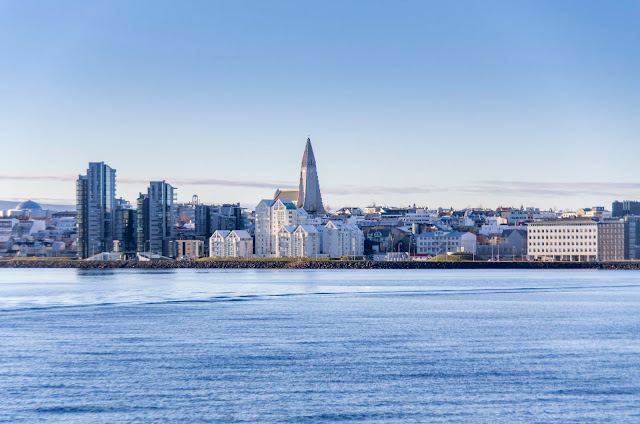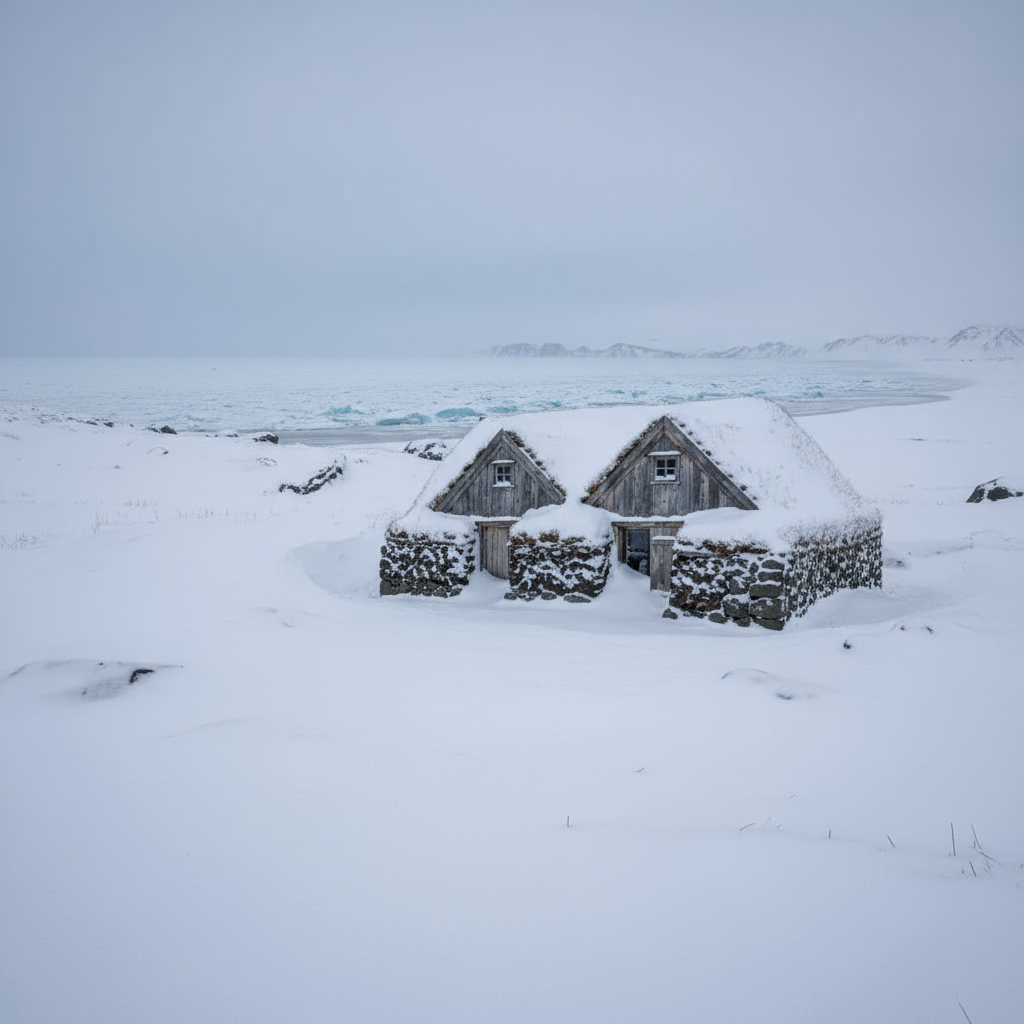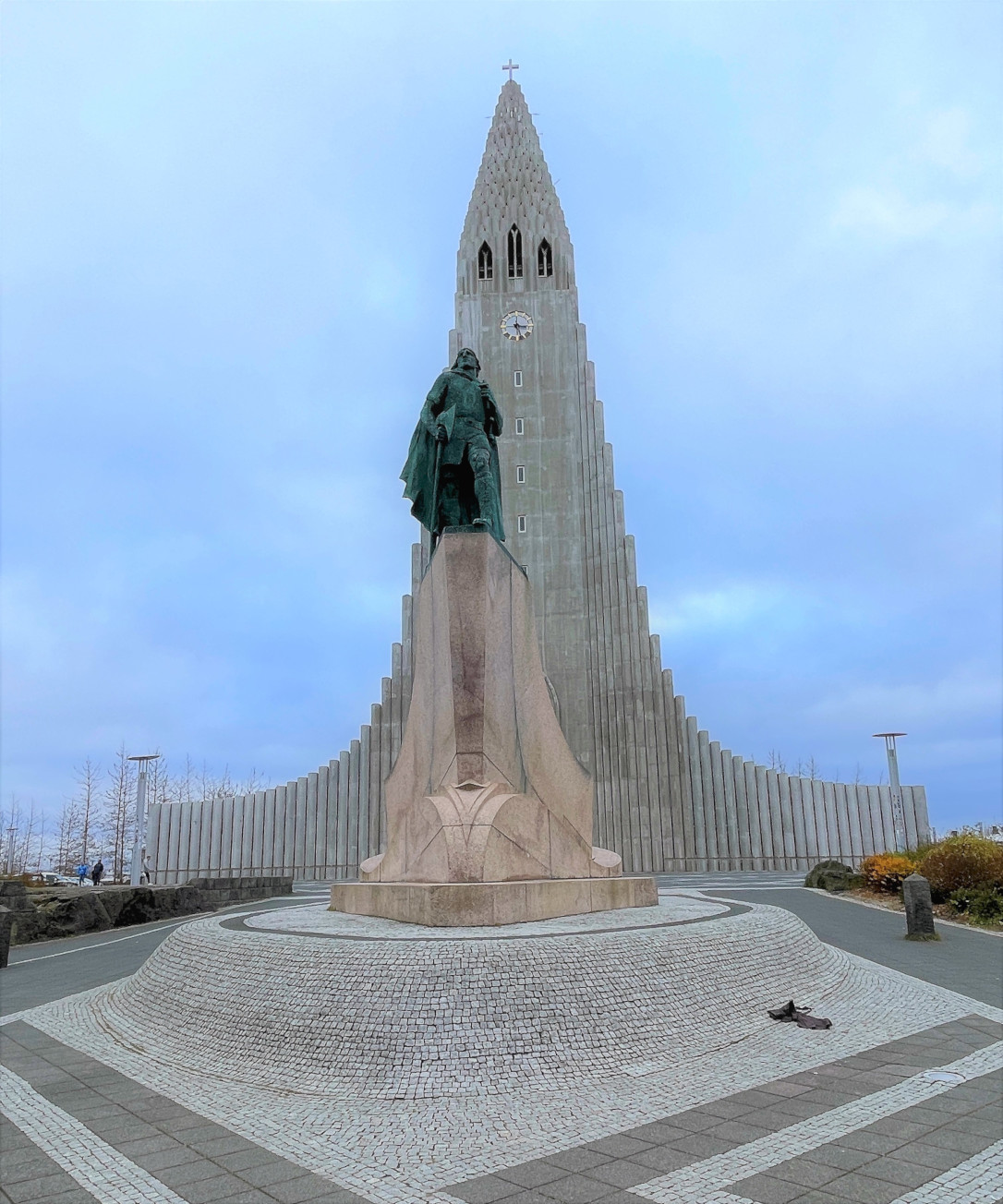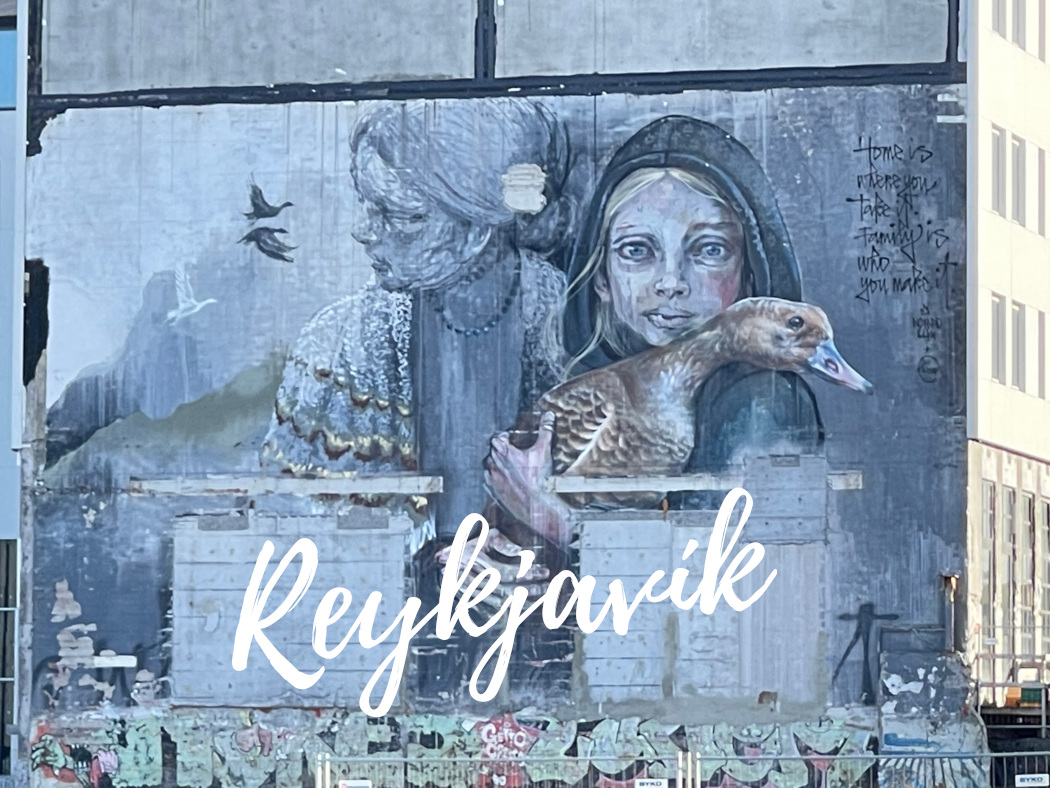The voice on the radio was louder than the blaring music, yet no one heard it but one man.
 |
| Reykjavík and Faxaflói Bay. Johan Barrot |
Ever since Eiríkur can remember, he’s been communicating with spirit-beings. They have been by his side through thick and thin all his life, ready to be of service whenever he needs them.
 |
| Eiríkur Kristófersson. Menningastadur.123.is |
His first memory of a spirit-being was when he was four or five years old. It was spring and everyone in the household was outside working. Little Eiríkur was still in bed sleeping.
Slowly Eiríkur began waking up. As he opened his eyes, he saw a woman sitting at the foot of the bed.
The woman was wearing a sweater. He never saw her face, just the back of her head. Around her head she had a large striped folded apron. It was made from silk. This was very strange, Eiríkur thought. The apron ties hung down her back. At the end of the ties was a filigree silver button, This was also very strange.
Eiríkur sat up in bed. He wanted to take a closer look at the silver button. He stretched out his hand towards it. As he was about to touch it, both the button and the woman disappeared right in front of his eyes.
 |
| Brekkuvellir, the farm Eiríkur grew up in. It is also the farm he had the vision of the woman at his bed side. Eiríkur’s family was poor. Having 17 children made hand-me-down clothes as good as it would get. Eiríkur’s earliest memory was when he was two years old. More and more kids were being born into the household and there weren’t many clothes left for them to share. One day that Eiríkur will never forget was a day there were no boy clothes left to wear and he was forced to wear a dress. It was a miserable day for the young boy. Jón Ketilsson |
The first time Eiríkur attended a séance was in 1924. The medium was a young Danish man, Einer Nielsen (1894-1965). Einer only spoke Danish, so there was always someone present who could translate.
Fortunately for Eiríkur, he understood and spoke Danish. One of the spirit-beings communicating through the medium was a Danish doctor from Aarhus.
During the séance, the medium looked over at Eiríkur. He opened his mouth and through him came the voice of the Danish doctor saying, You have so many mediumistic abilities that we want you to work with us.
Eiríkur told the Danish doctor that he was a seaman first and because of that, there was no room to be a medium.
To be a seaman he was needed out at sea at all hours and seasons. There was no possible way for him to dedicate himself to being a medium as well.
 |
| Eiríkur spent his last years at Hrafnista in Hafnarfjörður. Hrafnista is a home for elderly seamen. He continued helping people as a healing medium during his time there. His night stand was covered in little notes with names of people who needed to be prayed for. Every night he spoke to God and other spirit-beings. He also prayed for those who asked for help from Magnús. Hrafnista |
Eiríkur never became an official medium, but his abilities came in handy many times. They helped him save both ships and people.
Many of these stories can be found in the book Draumar og Dulskynjanir by Gunnar M. Magnúss. The incident I shared in my previous blog did not make it into the book and neither did this one.
 |
| Reykjavík and Faxaflói Bay. Grace Note |
 |
| Reykjavík and Faxaflói Bay. Mariell Jüssi |
 |
| Garðskagi Lighthouse. Hafsteinn Robertsson |
At 3:40 p.m. Eiríkur had a feeling of unrest come over him. Something was wrong, but he didn’t know what it was.
Something inside him urged him to go up to the bridge of the ship. Eiríkur put his book down and went upstairs.
Eiríkur walked inside the bridge of the ship. Þorvaldur Jacobsen, the helmsman and a sailor were listening to loud music from England on the 1650 nm wavelength.
 |
| Garðskagi Lighthouse. Logi H G photostream |
Eiríkur walked over to the table where the map was laid out. He stood between the two men when he suddenly heard a voice over the radio. The voice overpowered the loud music. It was an S.O.S. message:
There is a boat in peril eight sea miles north-east of Garðskagi!
Eiríkur quickly grabbed a pencil and began writing the information down on a piece of paper. He wrote down the name and number of the boat.
What are you writing? asked Þorvaldur.
Eiríkur looked puzzled at Þorvaldur, who looked puzzled as well.
Didn’t you hear what they said over the radio? There is a boat in peril!
What a ridiculous nonsense, replied Þorvaldur. Eiríkur looked over at the sailor, but he just shrugged his shoulders. He hadn’t heard the message either.
 |
| Þorvaldur Jacobsen. Morgunblaðið |
Eiríkur picked up the receiver and called it in on the Reykjavík radio, He knew what he had heard and wasn’t going to dismiss it without a good reason. When Reykjavík picked up the call, he asked them if they had heard the announcement.
Reykjavík had not. They said that Eiríkur could rest assured that no one had called in anything, not a single call had come through in that time frame.
Eiríkur still wasn’t ready to dismiss what he had heard. He picked up the receiver again and tried calling the ship. No answer.
He then looked in the ship registry to see who owned the ship. Again, Eiríkur picked up the receiver. This time he called the owner of the ship.
The owner of the ship told Eiríkur not to worry. The ship had a good engine. Eiríkur hung up, but still not at peace with letting it go. He told the helmsman to pull up the anchor and sail towards the location he wrote down on the paper.
Þorvaldur and the sailor looked at him in disbelief. As the two men walked off to pull up the anchor, þorvaldur said to the sailor, I think the man has completely lost his marbles.
 |
| “The story of Vogar and the fishing industry are one and the same. For hundreds of years, the harbour at Vogar was the key to rich fishing grounds off Vogastapi, so rich that they were known in Icelandic simply as Gullkistan, Chest of Gold.” Helgi Halldórsson |
The storm was more violent now and they could only see about 200 meters ahead. Eiríkur told the crew to wake up the off-duty watch. Reluctant and confused, Þorvaldur did as he was told. Eiríkur explained to Þorvaldur that they were needed to help fasten the boat. You’ll soon see what I mean.
The off-duty watch got ready to help. When they saw Eiríkur, they gave him the evil eye, but when they saw him looking right back at them, their gaze fell to their feet.
Only Three minutes later, they came upon a ship that was obviously in need of assistance. They aimed their lights on the ship. They could see the name and the number on the ship and to their surprise, it was the same ship Eiríkur had written down.
 |
| Keflavík. Diana Robinson |
 |
| Keflavík. Allison Stillwell Young |
The captain then explained that their ship had made its way up the small skerry, Þormóðssker. The steering wheel had gone off the loop and was resting on a screw, rendering the ship completely helpless.
 |
| þormóðssker. The French research ship, Pourquoi Pas? went down by this skerry in 1936. After the devastating accident, it was decided to put a lighthouse on the skerry to warn future ships. haddigunn |
In all, Eiríkur shared a total of six similar otherworldly interventions that happened out on the ocean during his Coast Guard years.





